Reviews
Frederick Wiseman
USA, 1991
Credits
Review by Katherine Follett
Posted on 20 June 2008
Source Zipporah Films DVD
Categories Frederick Wiseman
Aspen, released in 1991 and shot in vivid color, takes on a wider scope than some of Frederick Wiseman’s other films. Instead of focusing on a single building or institution, Aspen attempts to cover an entire town, albeit one with a rather monolithic economy. To do this, Wiseman films two parallel, but separate communities: the ski resort and the economic and social life surrounding it, and the year-round residents and their lives.
I wanted to see and review Aspen for very personal reasons. I grew up on the fringes of an extremely popular ski resort, and the contrast between the modern, leisure-oriented, wealthy ski area (“the mountain” to locals) and the traditional, working-class, agrarian town was stark. A solid majority of students in my high school didn’t know how to ski or snowboard. (I didn’t learn until after college.) On weekends, European cars with out-of-state plates would jam the mountain passes, and then during the week, it was back to rusting pickups. If you got a job on the mountain, it was often as a waitress, a maintenance worker, or on a hotel’s staff. It’s a juxtaposition that seems ripe for Wiseman’s socially conscious yet commentless method of exploring a subject.
The film opens with these contrasts in full view. We see humble monks greeting the day in their monastery and a man tossing hay to his cattle before switching to an advertisement-worthy shot of people in colorful ski gear swishing down the moguls. The juxtaposition between Aspen “the mountain” and Aspen “the town” seems even sharper in 1991 than it does today—the mountain lacks the younger, more scruffy demographic that came to ski resorts after the explosion of snowboarding. The skiers are uniformly tanned, coiffed, and brightly dressed. They all drive those gargantuan early SUVs with the fake wood paneling along the side. There are unexpected celebrity sightings (“Hey, that’s the guy from 60 Minutes!” “I thought John Denver was dead by then!”). The vacationers go to spas and gyms, take painting classes, visit boutiques with over-priced tourist gear, and have dinner parties with sparkling conversation. On the other hand, the people of the town seem to spend most of their leisure time at church. They listen to “Take this Job and Shove It.” They work in mines. There are shots of massive ski chateaus and shots of trailer parks.
Perhaps I was bringing too many of my own expectations to the film, hoping it would scratch a particular itch, but at the end of its substantial running time, I felt that Aspen had lost some of this focus. Partly, this is because many scenes turned out to be unnecessarily boring. Wiseman gives us extended shots of a lecture on how to bring Christian thought to the world economy. He films an inexplicable interaction between a man and some sort of quack “healer” who repeatedly touches his pressure points with a squealing electronic pointer. He seems to film a large number of adult-ed classes, few of which are interesting in and of themselves. Wiseman’s intention may have been to give viewers a more subtle and complete picture than the strict dichotomy of rich skiers/poor townies by showing academia. These scenes do add additional layers to the social and economic life of the town, specifically the life of the year-round residents. It is difficult for us to dismiss the residents of Aspen as hicks when they’re seen discussing immigration or Flaubert. But I found myself wishing he had chosen less dull examples. One of my favorite scenes in the film is an anniversary party held in a local hall. The country music and the western shirts identify these people in sharp contrast to the relentlessly fashionable skiers, but their heartfelt joy immediately makes them fully, warmly human. Church also takes up a great bulk of the film, mostly a rather bland Protestant variety. We can only interpret that Christianity is important to the residents of Aspen—or at least that Wiseman came away with that impression. But even the residents themselves start to look a little glazed after too many overhead slides about the influence of Biblical morals on economic growth.
Many of these extended scenes feel specifically intellectual. While I’m grateful Wiseman acknowledges that the residents of Aspen have intellectual lives (and it’s worth noting that other than a few scenes of conversation, the skiers’ pursuits include almost nothing intellectual—it’s either recreation or pampering), academia and Bible study is neither particularly interesting, nor, I would argue, particularly resonant with either the participants or the viewers. These intellectual discussions, whether secular or religious, don’t seem to reveal very much of the inner life of anyone in Aspen—not even as much as Wiseman’s brief shots of playfully painted Victorian homes dotting the residential areas of town. These scenes of intellectualism clearly prove that the town of Aspen is more than just tourists and townies, but they don’t inspire much empathy, or even much interest, in either. It doesn’t help that many of these scenes are concentrated in the second half of the film, dragging out the viewing experience and taxing the best attention spans.
I was also disappointed that he documented almost none of the people who actually work to make the mountain run. The shots of the ski resort consistently look like advertising: beautiful, active, refreshing. They remind the viewer that skiing looks, and is, exhilarating. But Wiseman doesn’t even show those trim, tanned skiers having to wait in line for the lifts. Aside from one brief interaction with a ski patrol guy, we never see the mechanics of the resort. If Wiseman wanted to explore the gray-area between the resort and the town, I think the most fruitful thing to film would have been the labor that keeps the resort moving. And from what I have been told by friends who have worked at ski resorts, this work itself is unexpectedly fascinating. (My friend, a dispatcher, tells me I wouldn’t believe how many people die at a ski resort every season. And how do they get all those kegs of microbrew up to the mountaintop lodge when there are no roads? What happens when the lift shorts out and you’ve got 200 people suspended from cables 50 feet in the air? Come on—ski patrol is paramedics on snowmobiles! There’s a movie in there somewhere.) This is where the town cannot deny the economic benefits of the resort, and the resort cannot survive without the work of the town. Perhaps Aspen (the resort) didn’t allow Wiseman to film behind the scenes, but nonetheless, it’s an omission.
Wiseman’s filming is, as always, beautiful and graceful to the point at which the camera’s intrusion is nearly invisible. His color cinematography just about manages to do justice to the powerful beauty of the Rockies. He captures the oddly endearing, robot-like crawl of snow groomers patrolling the mountainside in the dark. His work in this film, as in his other films, is dated to a pinpoint of a few months in time—not “dated” as in “outdated,” but dated because it is so astute and precise in capturing a single specific moment.
In the end, I felt that Aspen doesn’t show Wiseman at his best. In many of Wiseman’s other films, his careful filming and editing choices reveal the director’s empathy and, if we look carefully enough, his opinions on the topic at hand. I would say that in Aspen, Wiseman’s point of view is relatively obvious—the skiers and tourists are shown partying, consuming, and being pampered, while the residents are shown working, worshipping, and learning. As with any summation of a Wiseman film, this is an oversimplification. But I think that by emphasizing the intellectualism of the town’s residents, Wiseman risks distancing and boring his audience. And by showing only the most superficial activities of the skiers, Wiseman risks pigeonholing the entire group as vain, vapid, and materialistic. And, most frustrating to me, by not showing any powerful links between Aspen’s two sides, Wiseman omits the crucial connections that link the ski resort and the town—connections that are essential to the survival of both, whether either side admits it or not. Aspen was one of the few times I’d watched a Wiseman film and thought that the director had missed critical parts of the picture.
More Frederick Wiseman
-
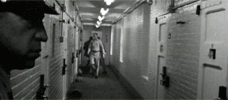
Titicut Follies
1967 -
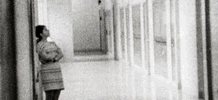
High School
1968 -

Law & Order
1969 -

Basic Training
1971 -

Juvenile Court
1972 -
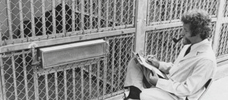
Primate
1974 -

Welfare
1975 -
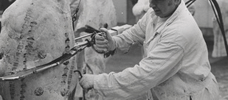
Meat
1976 -
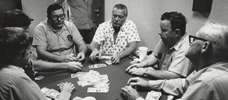
Sinai Field Mission
1978 -
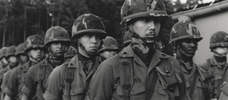
Manoeuvre
1979 -

Model
1980 -

The Store
1983 -

Blind
USA -

Adjustment & Work
1986 -

Missile
1987 -

Central Park
1989 -

Near Death
1989 -

Aspen
1991 -

Zoo
1993 -

High School II
1994 -

Ballet
1995 -

La Comédie-Française
1996 -

Public Housing
1997 -
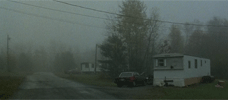
Belfast, Maine
1999 -

Domestic Violence / Domestic Violence 2
2001 / 2002 -
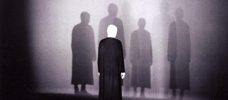
The Last Letter
2002 -

State Legislature
2006
We don’t do comments anymore, but you may contact us here or find us on Twitter or Facebook.



